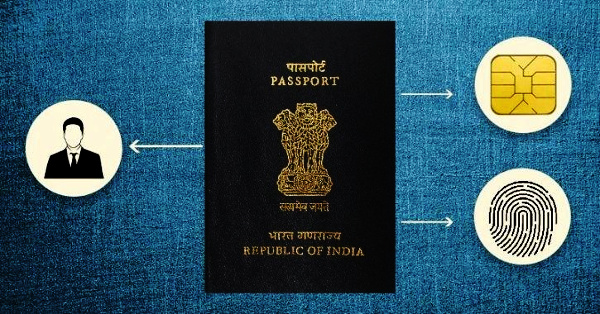India plans to introduce digital passports later this year as part of its efforts to improve security and make international travel smoother. The e-passports come with embedded microchips and futuristic technology, including AI (artificial intelligence), that will make immigration clearance a breeze at border posts worldwide.
With India set to join more than 150 countries, including the US, UK, and Germany, that use biometric e-passport systems, we look at its features and safety. Here’s what we learned about the e-passport from the reports from India
What is an e-passport?
An e-passport contains an electronic chip, which holds the information printed on a traditional passport’s data page: the holder’s name, date of birth, and other personal information. The data on the machine-readable chip is used to authenticate the passport holder’s identity.
Chips in digital passports of some countries contain a digital photograph of the holder, but reports say that the Indian e-passport initially won’t have a photo in the chip.
The e-passport will function exactly like a traditional passport but it will be more secure since the biometric data cannot be easily altered.
What are the features of the Indian e-passport?
The e-passport will include a microchip in its jacket. The 64kb chip will contain all the personal information of the passport holder that will be available when it is scanned at an immigration counter. The passport will use Radio-Frequency Identification (RFID) and biometrics to verify the identity of travellers.
The chip will contain data from around 30 international trips. At a later stage, the chip will store the picture of the passport holder and biometric data such as fingerprints and facial recognition features.
More than 150 countries use digital passports, and there are at least 1,000 million e-passports in circulation globally, according to Future Market Insights. Entities such as the United National also issue e-passports.
In 1988, Malaysia became the first country to launch an e-passport. That was ten years before International Civil Aviation Organisation (ICAO) adopted a plan to integrate biometrics into passports and other machine-readable travel documents.
The first ICAO-compliant digital passport was issued by Belgium in 2004, while South Asia’s first e-passport was introduced by Bangladesh in 2020.
What’s the data in the e-passport chip?
The microchip in an e-passport will include information about the passport holder. It will be scanned at the immigration counters facilitating the identification and clearance of travellers in a matter of minutes.
How will e-passports help travellers?
An e-passport can be scanned by machine-readable devices, unlike the time-consuming physical verification at immigration counters. And it will help eliminate long queues for immigration clearance. Since the electronic chip has advanced security features, e-passports will help clamp down on fake passports.
How secure is an e-passport?
The e-passport will comply with the International Civil Aviation Organisation (ICAO) standards. Hence, it will be difficult to tamper with the chip or destroy it. Any attempt to alter the chip or the data in it will result in failure of passport authentication. The security features will also prevent unauthorised data transfer through RFID.
Why use an e-passport?
An e-passport has advanced security features that prevent identity theft and forgery. The microchipped travel document enhances connectivity paving the way for a better-streamlined immigration process.
What are the changes in the application process?
The procedures for applying for an e-passport is the same as the traditional one. That’s by filling out the application form on the government website. It will not impact the time required to issue a passport, and the delivery systems remain unchanged.
When will India start issuing e-passports?
The issue of e-passports is likely to start later this year. It will begin as soon as the procurement process is completed by the Indian Security Press in Nasik, Maharashtra.
All 36 passport offices in India under the Ministry of External Affairs will issue e-passports. Indian embassies and consulates worldwide are also expected to give e-passports, but there’s no information on how soon that will happen.
India has already issued about 20,000 e-passports to diplomats and other officials under a pilot project in 2008.
Source: GulfNews
You may also like
-
Navigating India’s Skill Landscape
-
Trade Connect E-platform For Exports Is Single Window, Fast, Accessible And Transformational: Shri Piyush Goyal
-
India-us Working Together In Areas Like Critical Minerals, Supply Chains And Advanced Technologies: Shri Piyush Goyal
-
Cabinet Approves Health Coverage to All Senior Citizens of the Age 70 Years and Above Irrespective of Income
-
Cabinet Approves PM Electric Drive Revolution in Innovative Vehicle Enhancement (PM E-DRIVE) Scheme With An Outlay of ₹.10,900 Crore
